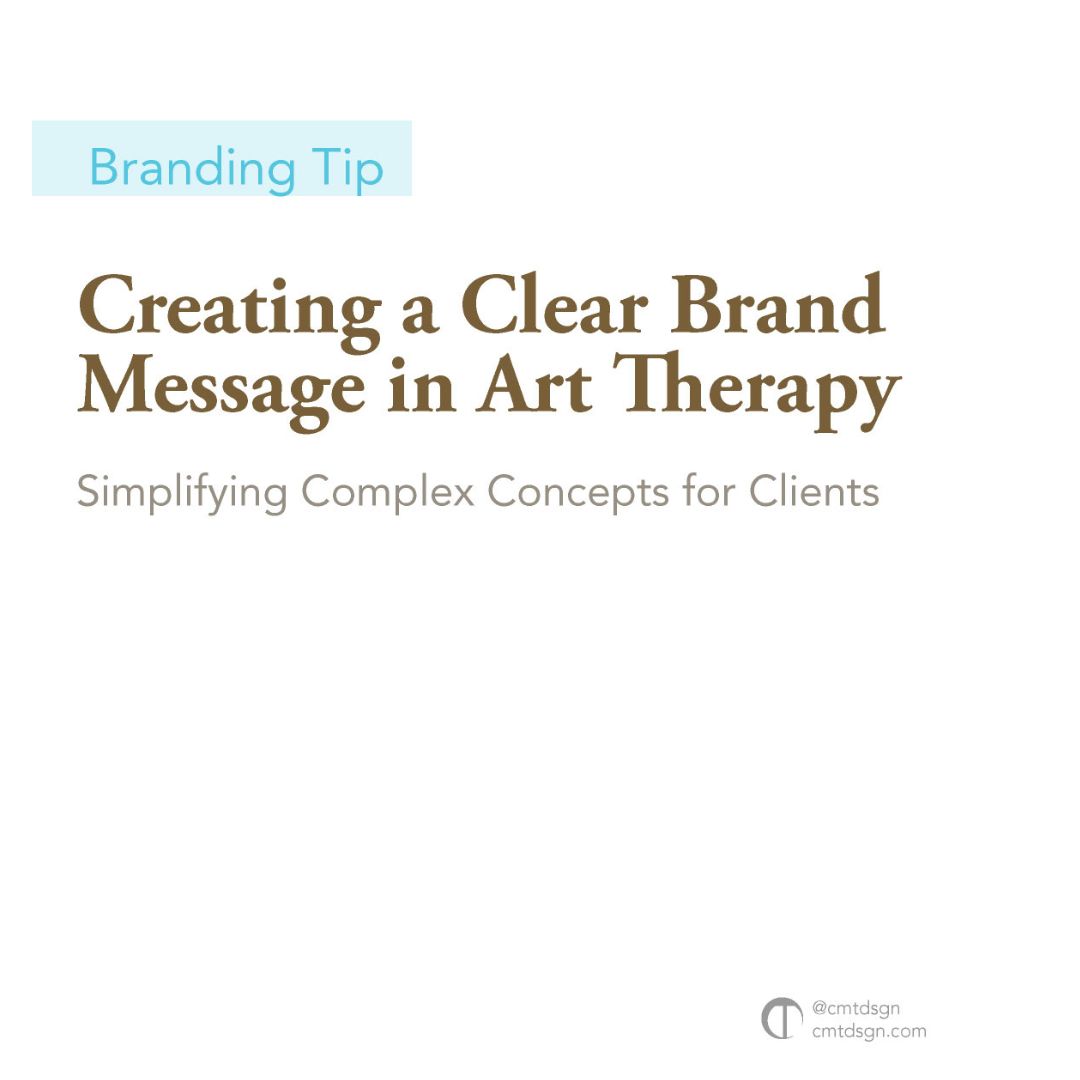Picture this: A brush gliding effortlessly across a canvas, translating emotions into strokes of colour, offering solace and healing to those in need. Art therapy, an incredible profession that wields the transformative power of creativity, holds tremendous potential to bring positive change to the lives of countless individuals. This can come into reality through a powerful brand message.
But here’s the burning question:
Are you effectively communicating the value of your art therapy practice to your clients?
What if you could master the art of creating a clear brand message in art therapy? What if you could simplify those complex concepts, distilling them into digestible and relatable insights for your clients?
Imagine the impact this could have on finding your direction and building a loyal community of individuals who truly value and champion your work.
In this thought-provoking blog post, we delve deep into the art of crafting a clear brand message in art therapy while simplifying those intricate concepts for your clients.
Whether you’re a proactive art therapist seeking to elevate your business or an aspiring professional venturing into the world of art therapy, this guide is designed to help you unlock the potential within your practice.
I have witness this myself and it’s such a beautiful experience using our imagination and exercising our minds to embrace this visualization we hold since childhood. Once this part of the brain is awaken it brings so much life to our lives and gives us a new perspective and outlook in how we look at things or life in general!
With this amazing phenomenon so many people are missing out on this way of healing and its because of problems in brand messaging and communication within art therapy brands. It’s not clear enough because either art therapists are trying to do too many things or it’s not directly speaking to a specific person not meeting their needs, wants, desires.
As art therapists, it is crucial to establish a clear brand message that effectively communicates the essence of art therapy to potential clients.
However, art therapy can involve complex concepts that might be challenging for individuals who are unfamiliar with the field to grasp. I will explore strategies in this article for creating a clear brand message in art therapy by simplifying complex concepts for clients, enabling them to better understand the benefits and purpose of art therapy.
Throughout this journey, we’ll explore strategies and techniques that will empower you to effectively communicate your unique value proposition (UVP) and connect deeply with your target audience. By simplifying complex theories, methods, and approaches, you’ll gain the tools to foster understanding and engagement, ensuring that your message resonates powerfully with your clients.
But it doesn’t end there. We’ll also discuss the vital aspect of finding your direction as an art therapist and building a loyal community who not only appreciates but actively supports your work. Together, we’ll embark on a quest to uncover professional development opportunities, set meaningful goals, and leverage the strength of community to forge a path towards success.
So, are you ready to embrace clarity and weave a brand message that transcends words?
Join me as we embark on this transformative journey of simplifying complex concepts in art therapy, empowering you to make a profound impact on the lives of your clients and the broader art therapy community.
Get ready to breathe life into your art therapy practice like never before. Let’s dive in and discover the art of creating a clear brand message that speaks volumes and simplifying the complex to touch hearts and minds.
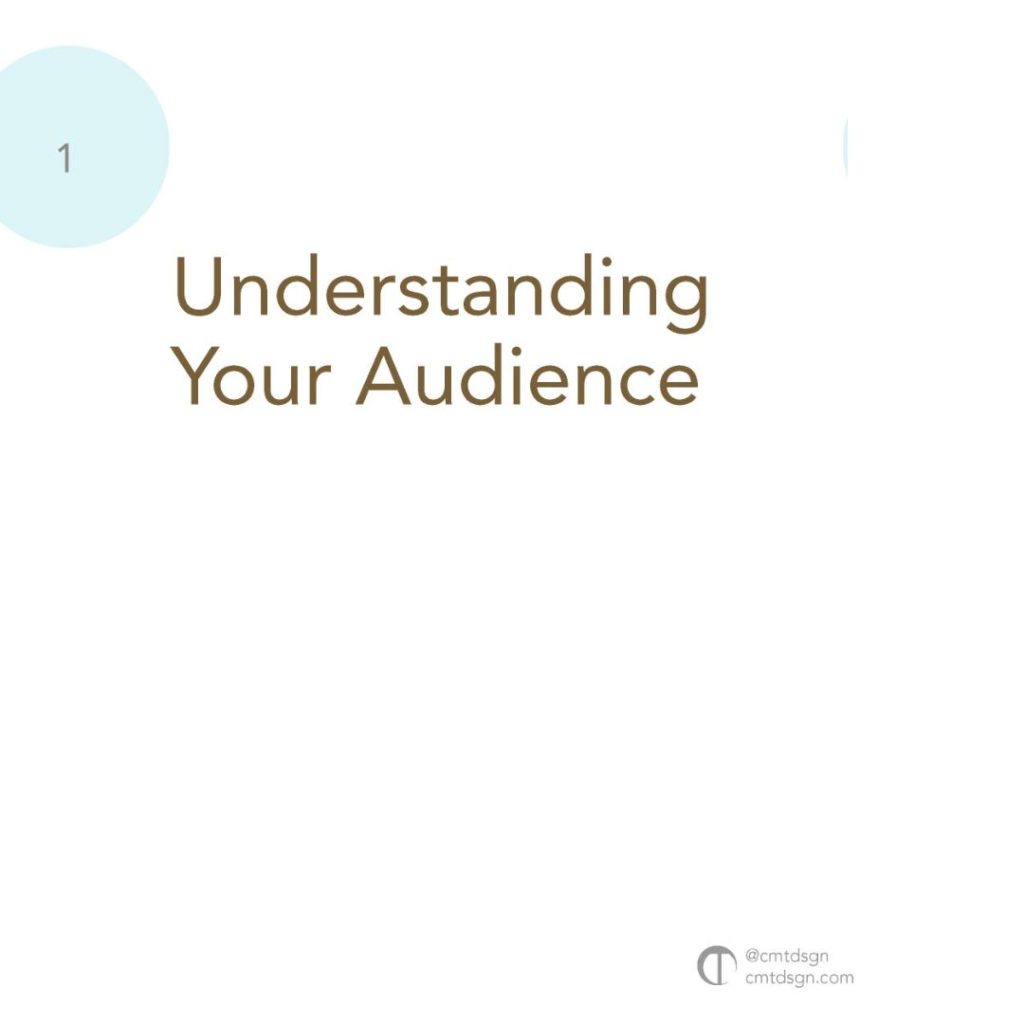
Understand Your Audience
This is a no brainer and have mentioned this in a few of my other posts but this is an essential component for all art therapy brands. The brand needs to speak to a particular person for any trust and understanding to happen or else you are wasting time and energy speaking to a void.
You need to focus your energy in clarifying who your ideal client is and take time to understand the type of person they are. Consider the demographics (don’t get too caught up on this category), psychographics is the area of focus that covers interests, needs, wants, desires, pain points, behaviours and goals you want to reach. By gaining insights into their perspectives and mindset, you can tailor your message in their language that resonates with them.
For example, if you primarily work with children, your language and imagery may need to be simplified and child-friendly.
Think about the type of person you want to work with and design your brand around that person so that it speaks to them only, it match their essences and expectations.
What I mean by this for example how you sound, your ideal client expects a certain voice and sound from you. They might want you to be someone that sounds casual and cozy instead of informative and conservative.
Listen for that from your ideal client because you want to meet their wishes and be consistent but also check in with yourself see if this is doable for you as it needs to be something natural and not forced. Even in your visuals you must add in your ideal clients interests and things that they love and you love it should be a marriage of both worlds that have common interests and stem from that. You will establish high attraction that way when two similar worlds come together.
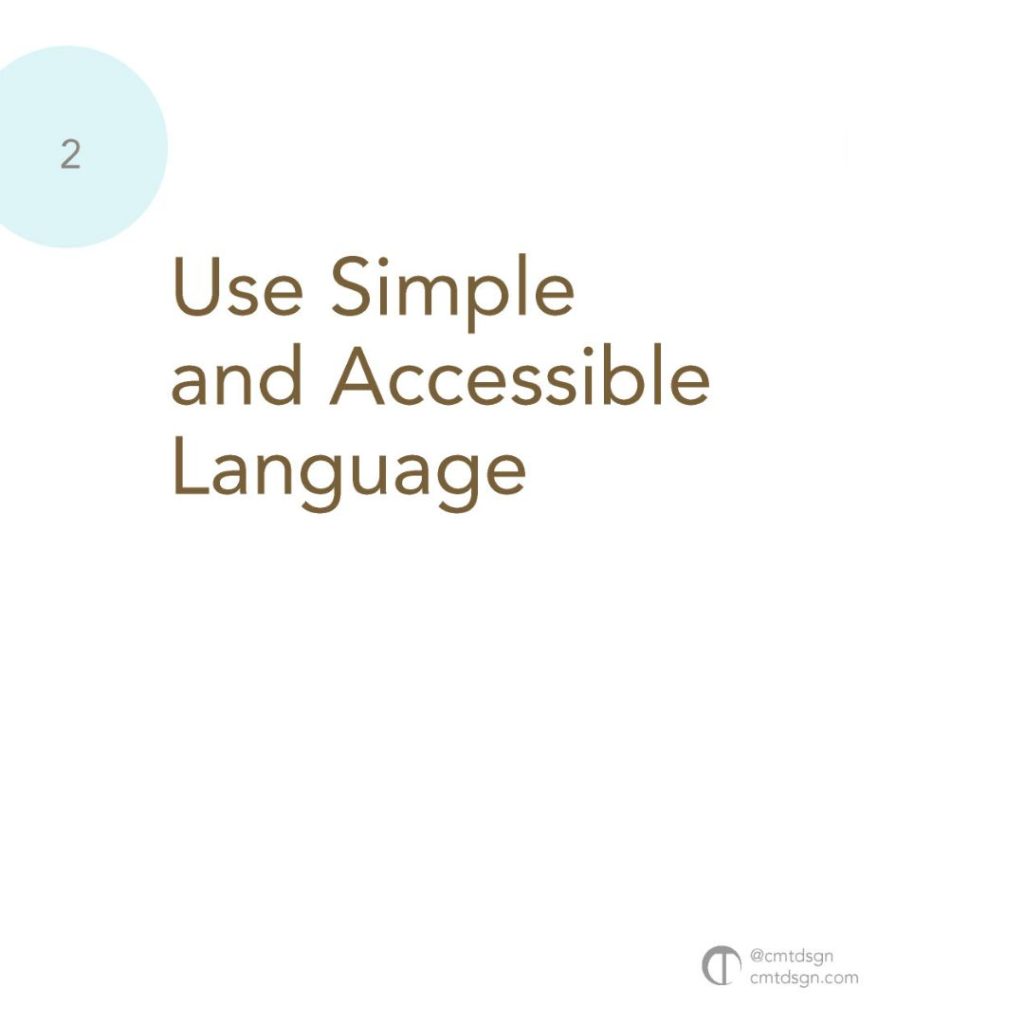
Use Simple and Accessible Language
Like I mentioned in the first point about understanding your ideal clients language will play a huge role in speaking, writing and building your content marketing. Knowing what they understand in mental health and in art therapy, if any, play off of those words they know to bridge gaps of understanding.
If you visualize a trench you as the expert are on one side and on the other side is your ideal client but in between is a gap. How do you build the bridge to reach them? The first thing to do is to remove the professional and conservative wall because it creates superiority and positions you someone with power.
This is not what you want to happen, its not about out smarting anyone with your huge terminology, its how can I take what I learned in my practice and translate into words that are humanized and universal so that its simple and easy to understand. When communicating with potential clients, avoid using jargon or overly complex terms that may confuse or intimidate them.
Giving them a higher chance of turning away and not coming back because their frustrated that they can’t relate to you or understand, even on the contrary they might feel that you don’t understand them because you are not talking time to learn about them.
Instead, focus on using clear and accessible language. How to do that?
Keep written sentences and paragraphs concise.
Break down complex ideas in small snackable small bite size pieces for less overwhelm and its digestible and easy to process. Aim for clarity and simplicity in your sentence structure.
Use familiar words
Choose words that are commonly understood by your ideal client and this will require interviewing them, asking them questions and having selective people review your sales pages or offer. Avoid using overly complex or obscure vocabulary thats where you could lose them unless you provide a simple explanation alongside it.
Organize your thoughts logically
When you are sharing a concept of a activity with your ideal client where its in a session or in a content post. Present your ideas in a logical order how they should receive it so that automatically get it. Think about what they should know first before sharing the next step or point. In your writing use headings, subheadings, or bullet points to break up information. This helps your ideal client navigate your content more easily.
Consider your ideal client when writing
Going back to the first point about understanding your ideal client and think about their background, education and familiarity with the subject matter. If you are looking to help children they might not get your professional terms and might like if you relate it to a interest they have for example a Disney character and their story. How can you connect this to what they need to learn and how can you present it in a simple fashion?
Use active voice
Many people struggle with passive and active voice, and it can be challenging to think in this way and write in this way even though it happened the past. Active voice makes your writing more direct and engaging.
Instead of saying, “Mistakes were made,” say, “We made mistakes.” This helps to clarify responsibility and improve comprehension. Being more direct this way will make your ideal client engaged and feel they can trust you with their problem because you are not dancing around what you do.
You are being clear and concise and telling them exactly what they get and they will appreciate you for it because they don’t have a lot of time to read through everything. You get the point really quickly which removes any long form paragraphs to explain what you do and of course their time is limited focus on keeping their attention and sticking to what they want to hear.
Provide examples and visuals
It’s always good to support your content with visuals because now a days people don’t have time to read, they can only skim to see if its worth their time. Use relevant examples, analogies, or metaphors to illustrate your points. Visual aids such as charts, diagrams, or infographics can enhance understanding, particularly for complex concepts.
Add in your humanity
Know how you talk to your friends and family this is how you should approach your clients too. Use your brand voice to your advantage and get to know it well and be more aware of how you naturally speak and what you say consistently. The more human you sound the more simpler your sentences and communication becomes.
Take time to articulate your brand voice and make a note of the common words or phrases you say on a daily basis and how you can integrate it into your brand messaging. The more natural the better and the more attractive you become, the focus is about heart to heart connection with another human being.
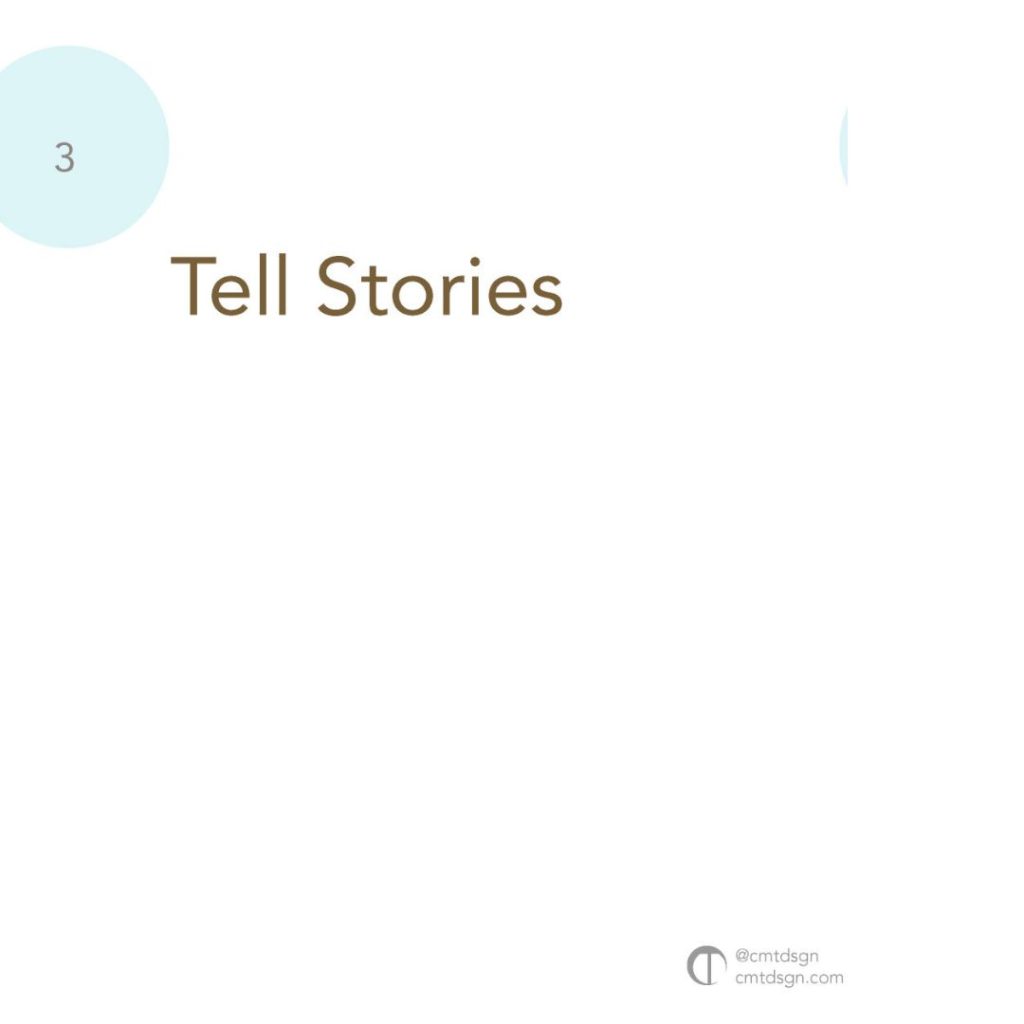
Tell Stories that Apply to Brand Message
I mentioned about providing examples and visuals in my last point and stories are great for that! Stories have a unique ability to engage and captivate an audience. I highly encourage you to incorporate narratives that illustrate the positive impact of art therapy. We all have storyteller skills within us because its been dormant since childhood and its time to bring that back to the surface.
Stories inspire, create emotional responses and moves people to take action.
Use your imagination here for stories, pull from your personal experiences, was there are time in your life where art therapy saved you? Was there a time that you helped your friend solve a problem with using art therapy. Be selective with the stories you create because you don’t need to go too deep just enough to show the ideal client how art therapy can change a person or solve a problem and back you up as to why you are here. People buy why you do what you do not what you sell.
These 3-5 stories you craft need to speak about your why and a specific problem you are focusing on. These would be your origin stories but on the flip side you want to also have client transformative stories. These would be success stories and testimonials from previous clients. You ideal client would much prefer to not hear from you about how art therapy can help them but hear from your past clients and how they felt before and after the session and the results they got from you!
Your past clients will better highlight how art therapy helped them overcome challenges and achieve personal growth. These stories humanize the therapeutic process and make it easier for potential clients to connect with the benefits of art therapy. If you don’t have any past clients I would suggest a founding member launch where you run a beta test of your art therapy offer for free or at a very low cost because the goal is not make money, its about collecting feedback and experiences from a selective group of people that you screen and bring on board.

Visualize the Brand Message
The power of brand visual identity can play off of your personal stories and client transformative stories. You are probably wondering how can I do that? As art therapists, you have the advantage of utilizing visuals to convey your brand message.
You can look at your client stories and pull from the results they got from you and how they felt after working with you and use this data as a tool to incorporate visual elements that reflect such as illustrations, photographs, or infographics to represent the transformative journey of art therapy. Visuals can help simplify complex concepts by presenting them in a more digestible and engaging format making them curious and want to learn more and dig deeper.
This would be surface level engagement when your client first meets your brand, and that part is important. Use colours, symbols, and images that resonate with your ideal client and align with the emotions and experiences associated with art therapy.
They have to subconsciously showcase the feelings that art therapy brings to people and that means it can’t be your favourite colour. The brand identity is an 80/20 rule, it should speak and resonate with your people 80 percent of the time because it speaks to them, and that 20 percent should match you as well. A marriage between both of you to make something amazing.
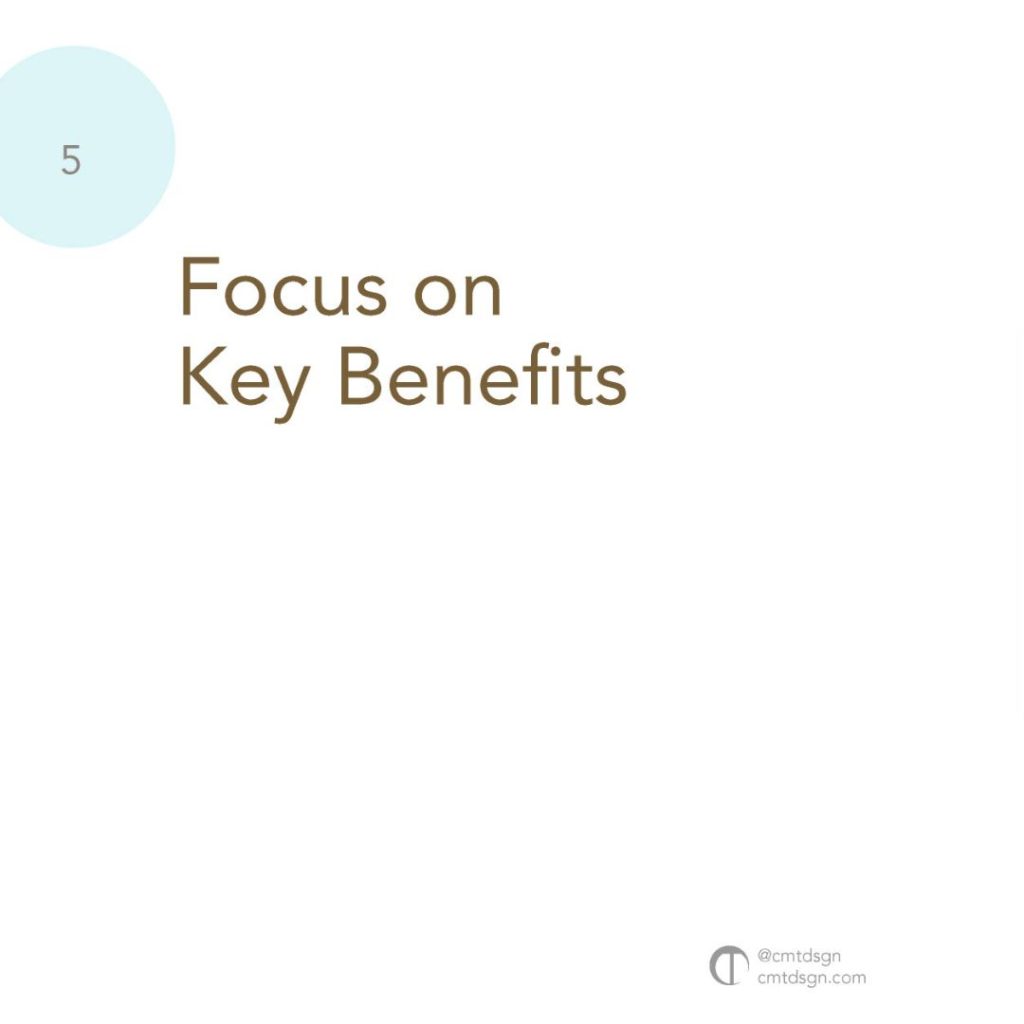
Focus on Key Benefits
I understand that many therapists do other techniques and approaches within their business but each of those approaches holds different benefits, results, solutions, and solves different problems. I’ve seen art therapist trying to do everything under the umbrella and telling clients the benefits of all of them.
This surely brings confusion to the client not knowing what you do specifically and which service to go for. Focus on one approach and stick with it, even though art therapy encompasses a broad range of techniques and approaches, it is essential to focus on one area in art therapy and specifically highlight the key benefits it brings to the specific problem of the ideal client and that you solve the best into a concise and easily understood message.
Map out the core aspects of art therapy this way will paint a better picture in the clients mind and visual what it might look and feel like. Ensure it resonates with your ideal client and consistently emphasize those in your brand message. Whether it’s self-expression, emotional healing, stress reduction, or personal growth, highlight the specific benefits that clients can expect to gain from engaging in art therapy.
Provide Clarity on the Process
Art therapy can seem mysterious to those who are unfamiliar with it, the top reason why they run for the hills every time because its foreign. To create a clear brand message, it is important to demystify the therapeutic process by clearly explaining how art therapy sessions are structured, what clients can expect during a session, and how art is used as a tool for self-exploration and healing.
You can do this by creating an infographic with visual and supportive text to paint the picture for the client so that there is no ambiguity or uncertainty. The more you show the better the client will feel when saying yes to you for art therapy. By providing clarity on the process, potential clients will feel more comfortable and confident in seeking art therapy services. Break down your process into three to five steps so that the expectations are clear and they know what is expected of them and of you.
Creating a clear brand message in art therapy requires simplifying complex concepts for clients. By understanding your ideal client, using simple and accessible language, telling stories, visualizing the message, focusing on key benefits, and providing clarity on the process, you can effectively communicate the transformative power of art therapy. Remember, the goal is to make art therapy approachable, relatable, and inviting to those who can benefit from this incredible form of therapy.
